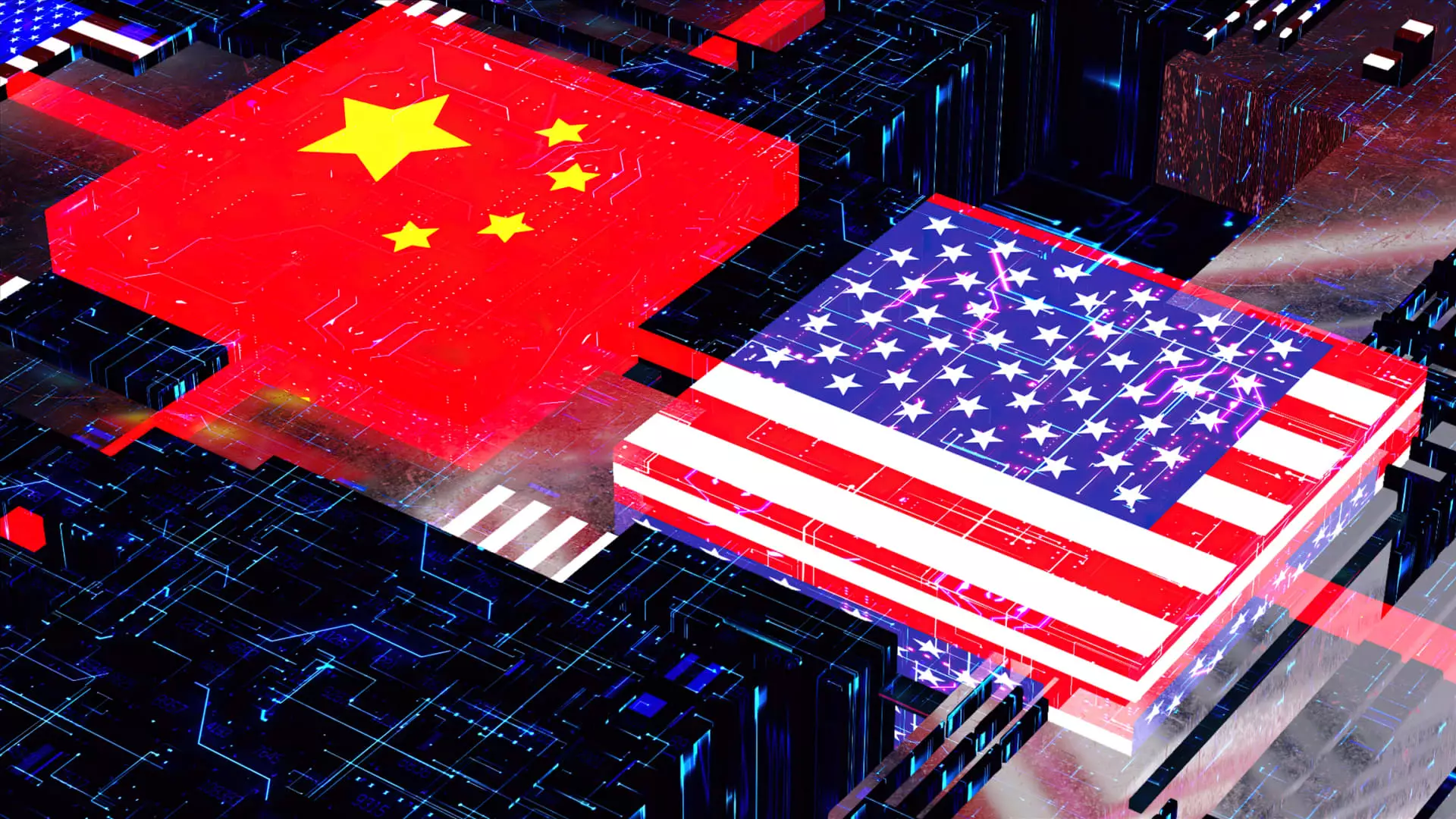The semiconductor sector, a linchpin of modern technology, finds itself as a kingpin caught in a tempest of uncertainty. Industry giants are grappling with evolving geopolitical dynamics and erratic U.S. trade policies that have set the stage for a profound existential crisis. As companies navigate through a maze of unpredictable tariffs and export restrictions, particularly concerning their tenuous relationship with China, their once formidable foundations are beginning to crack. Leaders within these firms have openly expressed their worry, as the profound shifts in trade and governmental policy have left them straddling a fine line between ambition and apprehension.
Even the titans of the industry aren’t immune; Advanced Micro Devices (AMD) has issued stark warnings of potential losses amounting to $1.5 billion due to AI chip export curbs aimed at China. Despite being a respected figure in the earnings landscape, the inevitable specter of lost revenue looms over their future, underscoring the fragility of reliance on a global supply chain now drenched in ambiguity. Moreover, Super Micro’s withdrawal from providing forward guidance is telling—their hesitance reverberates through the stock market, inflicting shocks that shatter investor confidence. The combined toll of macroeconomic headwinds and tariff policy turmoil has indelibly impacted not just companies but also the market’s pulse.
The Perils of Tariff Wars
Tariff wars don’t merely cast shadows over financial forecasts; they distort the very fabric of operational decision-making at semiconductor firms. As they attempt to weather this ongoing storm, companies like Marvell have chosen to postpone significant engagements like their investor day, reflecting broader uncertainties that seem to engulf industry strategy. This constant re-evaluation signals that clarity is becoming a rare commodity in a sector accustomed to high stakes and rapid innovation.
The broader market has suffered, too, as evidenced by the VanEck Semiconductor ETF, which tracks a basket of chip stocks and is down nearly 12% this year. Such data go beyond numbers, revealing a deeper crisis of confidence that reverberates across boardrooms in California and beyond. The sentiment that uncertainty reigns unchallenged reflects a growing reluctance among stakeholders to invest aggressively or maintain operational status quo amid a shifting landscape.
Global Players and Local Implications
It’s crucial to understand that the implications of American tariff policies aren’t limited to domestic firms but ripple through the global semiconductor ecosystem. For instance, Samsung, one of the largest memory chipmakers globally, has voiced its concerns about “high demand volatility” due to tariff changes. Geopolitical tension has introduced an unpredictable variable that complicates business strategies across the board. The executive voice from Samsung underscores a universally felt anxiety that the maelstrom of tariff retaliation and export restrictions could thwart not just individual prospects but the industry’s growth trajectory as a whole.
Amid these evolving dynamics, companies in China are meticulously crafting their own solutions to mitigate U.S. influence. Firms such as Huawei and Alibaba are making waves in their quest to compete against their American counterparts. This intense nationalistic competition begs a critical analysis: Are U.S. export restrictions genuinely protecting American interests, or are they merely hastening the emergence of a competing technology superpower in the East? The implications stretch far beyond immediate revenue losses, establishing a battleground for technological supremacy in which the rules are still being written.
Innovation Under Siege?
Yet, innovation remains the lifeblood of the industry, even as external pressures mount. Industry leaders like Nvidia maintain an optimistic view, positing that the potential for growth in markets such as artificial intelligence could reach a staggering $50 billion in just a few years. Their belief that American firms can thrive amidst fierce competition if given the opportunity is a beacon of hope amid the chaos, showcasing the grit and resilience of U.S. companies. Nonetheless, it raises a critical ethical question: what are we willing to sacrifice in our pursuit of technological dominance and, at what point does exporting democracy through technology become counterproductive?
Jensen Huang’s impassioned advocacy for unrestricted competition acknowledges that the United States cannot rest on its laurels—it must recognize its competitors and embrace the urgency to innovate. His call to “put the pedal to the metal” is emblematic of a sector that thrives on spirited competition and relentless innovation. Yet, there’s a growing concern that stifling collaboration through hasty restrictions may not yield the benefits intended and could precipitate a race to the bottom rather than a race to the future.
In a landscape fraught with uncertainty, the semiconductor industry’s trajectory remains perilously poised between ambition and a restructure that is both required and daunting. The decisions made today will echo in the boardrooms and living rooms of tomorrow.

